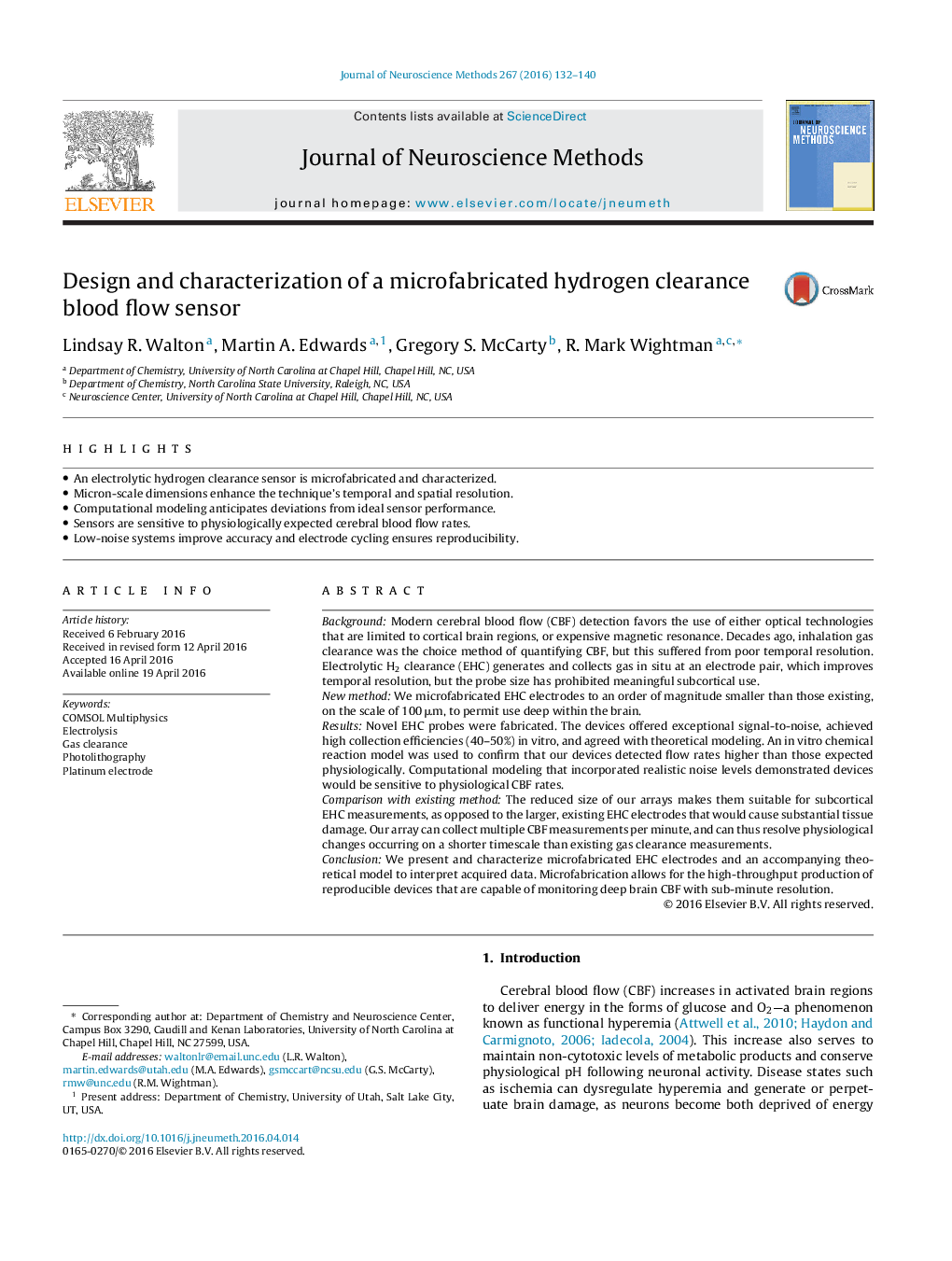| کد مقاله | کد نشریه | سال انتشار | مقاله انگلیسی | نسخه تمام متن |
|---|---|---|---|---|
| 6267771 | 1614602 | 2016 | 9 صفحه PDF | دانلود رایگان |
- An electrolytic hydrogen clearance sensor is microfabricated and characterized.
- Micron-scale dimensions enhance the technique's temporal and spatial resolution.
- Computational modeling anticipates deviations from ideal sensor performance.
- Sensors are sensitive to physiologically expected cerebral blood flow rates.
- Low-noise systems improve accuracy and electrode cycling ensures reproducibility.
BackgroundModern cerebral blood flow (CBF) detection favors the use of either optical technologies that are limited to cortical brain regions, or expensive magnetic resonance. Decades ago, inhalation gas clearance was the choice method of quantifying CBF, but this suffered from poor temporal resolution. Electrolytic H2 clearance (EHC) generates and collects gas in situ at an electrode pair, which improves temporal resolution, but the probe size has prohibited meaningful subcortical use.New methodWe microfabricated EHC electrodes to an order of magnitude smaller than those existing, on the scale of 100 μm, to permit use deep within the brain.ResultsNovel EHC probes were fabricated. The devices offered exceptional signal-to-noise, achieved high collection efficiencies (40-50%) in vitro, and agreed with theoretical modeling. An in vitro chemical reaction model was used to confirm that our devices detected flow rates higher than those expected physiologically. Computational modeling that incorporated realistic noise levels demonstrated devices would be sensitive to physiological CBF rates.Comparison with existing methodThe reduced size of our arrays makes them suitable for subcortical EHC measurements, as opposed to the larger, existing EHC electrodes that would cause substantial tissue damage. Our array can collect multiple CBF measurements per minute, and can thus resolve physiological changes occurring on a shorter timescale than existing gas clearance measurements.ConclusionWe present and characterize microfabricated EHC electrodes and an accompanying theoretical model to interpret acquired data. Microfabrication allows for the high-throughput production of reproducible devices that are capable of monitoring deep brain CBF with sub-minute resolution.
Journal: Journal of Neuroscience Methods - Volume 267, 15 July 2016, Pages 132-140
